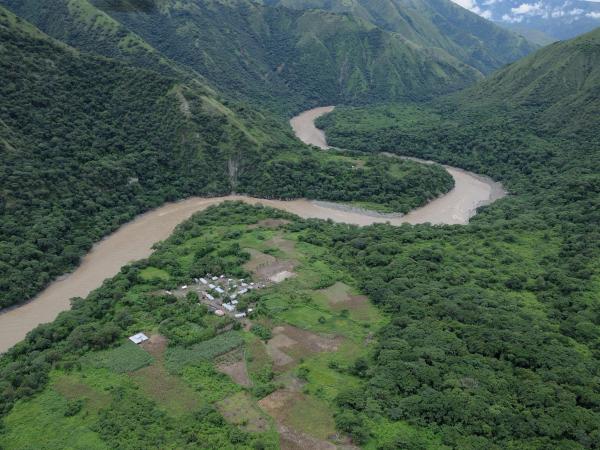Some five thousand people who live in the town of Puerto Valdivia, in the Colombian department of Antioquia, will be evacuated due to the imminent commissioning of Hidroituango, which will be the largest hydroelectric plant in Colombiaand the evacuation could be extended to other municipalities.
(What would be the effects of the delay in the delivery of Hidroituango?).
This was reported by the director of the National Risk Management Unit (UNGRD), Javier Pava, in the Unified Command Post installed this Saturday to assess the risk faced by the communities that are on the banks of the Cauca Rivernear the dam, before the next start-up of the hydroelectric plant, which has had several structural problems.
Pava pointed out that the UNGRD recommendation was “the evacuation of Puerto Valdivia and the definition of a series of indicators that allow us to see how the risk conditions are evolving” to find out if it is extended to the municipalities of Tarazá and Cáceres.
this will be a “preventive evacuation, not because there is an imminent risk or because there is a disaster, but because we need to have the greatest peace of mind and security. Until that evacuation is carried out, those activities that can generate a level of risk should not be started”Pave added.
(More doubts due to possible late start of Hidroituango).
This conclusion comes after this week the Colombian president, Gustavo Petro, assured that “Before turning on any turbine in Hidroituango, the population at risk must be evacuated as a precautionary measure, which is a universal principle.”
In addition, the Geological Service of Colombia was ordered to review the conditions of the massif on which the plant is built and deliver a report on its stability.
When its eight turbines are working, Hidroituango will have an installed generation capacity of 2,400 megawatts, equivalent to 17% of the country’s energy demand.
The builders of the work are confident that on November 30 the first turbine of the dam that rises in the canyon of a mountainous massif in the town of Ituango can start operating.
The work began in 2010 and should have been completed in 2018, but the collapse of a diversion tunnel for the Cauca River that year forced the builders to flood the engine room, that was almost finished, to prevent the water from destroying the wall of the dam that was then under construction.
(The agreement between EPM and the Government for the operation of Hidroituango).
This mega-project has not been without opposition, since the surrounding communities, together with civil society organizations, have denounced that the construction of Hidroituango has violated human rights, causing the displacement of peasants, and impacting the biodiversity of the area.
EFE

















